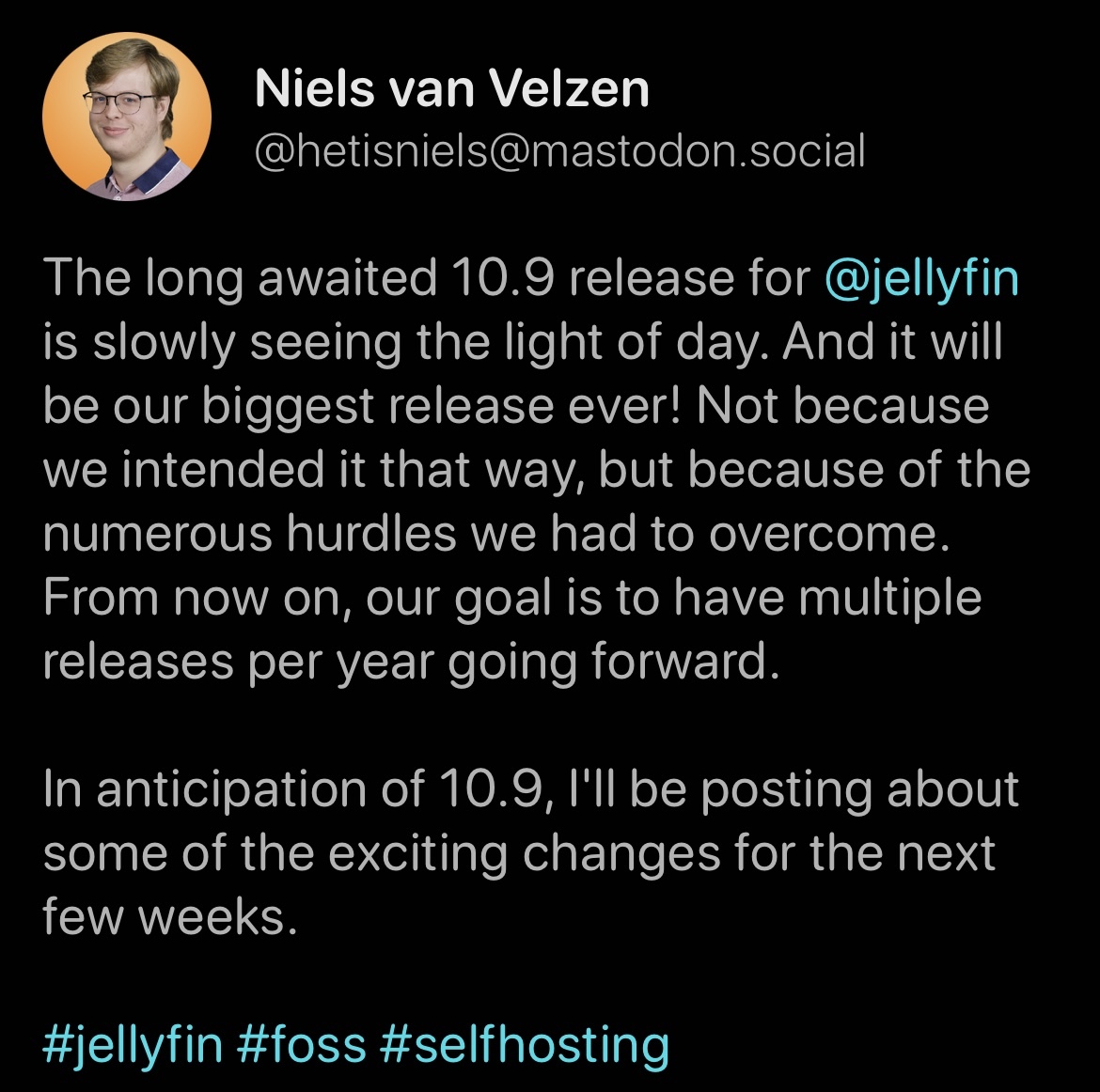this post was submitted on 05 Mar 2024
764 points (99.1% liked)
Jellyfin: The Free Software Media System
5895 readers
2 users here now
Current stable release: 10.10.5
Matrix (General Information & Help)
Matrix (Off-Topic) - Come get to know the team and blow off steam!
Matrix Space - List of all the available rooms on Matrix.
Discord - Bridged to our Matrix rooms
founded 4 years ago
MODERATORS
you are viewing a single comment's thread
view the rest of the comments
view the rest of the comments

Buy Blurays and rip them to your machine. From there copy them into Jellyfin.
You will need a Bluray reader, Handbrake and MakeMKV
@possiblylinux127 @Bluefalcon
In this order:
#Film #Movie #rip #Bluray #MKV #MakeMKV #Handbrake
Do not use AV1 or at least don't use it as of now as it isn't supported my most devices. I think there is exactly one phone that supports it as of now
Eh, Chromecast has AV1 and so do some smart TVs already. If that is your primary watching platform, encode away in AV1 and get an Arc A380 for the rest. It will also massively decrease encoding times.
I’m switching to AV1. But I’ve also been following its progress for years and understand the benefits and drawbacks. I wouldn’t recommend blindly jumping in if you’re new.
@possiblylinux127
@PM_Your_Nudes_Please
@Bluefalcon
A lot of newer Android-TV-Settop-Boxes are ready for AV1, for example products from Orbsmart.de like my Orbsmart S87L.
On that box is Kodi preinstalled and you can install everything from android-stores, also the Jellybin-client.
Don't forget: Jellybin is a very good open-source-software, but a client-server-system. So you need Hardware for the server-software.
#Jellyfin #Kodi #Orbsmart #AndroidTV #Settopbox #AV1
*Jellyfin
My point is that H264 is well supported everywhere so I personally am in no hurry to switch. Non of my devices support AV1 so it is a waste of my time for the most part.
What's worse is when I first started a bunch of people recommended AV1 which lead to Jellyfin not working.
And you're the norm, not the exception. Too many people choose to evangelize instead of looking at real-world use cases for the majority. I used to use Nvidia boxes around the house with Kodi. It worked but my wife and kids sure thought it was a pain in the rear often enough that it made it a pain for me too.
@clemensg @possiblylinux127 @PM_Your_Nudes_Please @Bluefalcon A lot of Android TV boxes also come with malware pre-installed. I am not familiar with any particular box by name, but it’s not a small percentage of them. I’d exercise caution with using anything pre-installed.
Untrue, all my devices support av1 at this point, so that's only your mileage.
I am happy with av1 and its awesome space savings over h264.
Over h264 sure, but h265? Hardly worth it for me.
In my experience the saving over h265 is still consistent and given that hardware h265 is less common that av1 on new devices, from h264 there is no need to go h265 but directly to av1 is better if you need to do the job.
Keep h264 otherwise.
I'm not sure what devices you have but if they were made before 2023 you likely are using software decoding.
av1 is going to be super niche and never fully adopted, just like ogg was for audio. h264/265 will be the main thing going for years and is just fine.
Are you aware that all android devices with A14 have av1 support as a requirement?
Also Apple is adding that, and amazon sticks already support av1 natively.
Said that, indeed h264 is and will be the safest and most supported choice for a very long time.
As 265 goes, not so sure.
I doubt it. In a decade its probably going to be the standard. It just takes time for devices to support it.
I know the nVidia Shield doesn't have it, and I'm not replacing that any time soon.
Worth noting that AV1 is less compatible with older devices. My old Samsung TV, for instance, refuses to play them. It can’t DirectPlay AV1, so the server tries to transcode. But even when transcoding, the stream still fails. If you have an older smart TV, you may want to stick with h264 for compatibility reasons.
You don't necessarily need to shrink them, but you can.
You should as storage is expensive and is slows down performance to do more reads.